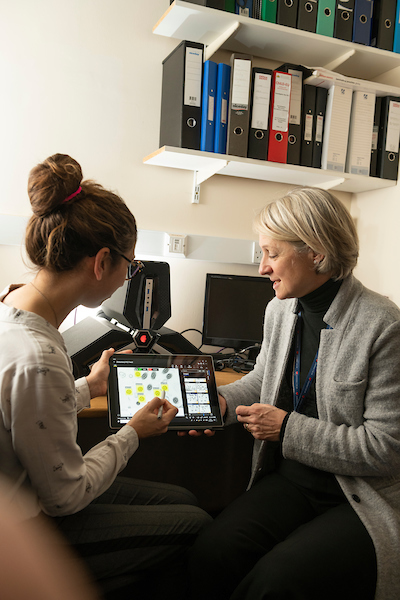 Professor Claire Hogg, paediatric respiratory consultant, is leading a study to enable artificial intelligence to diagnose primary ciliary dyskinesia (PCD), a rare, inherited condition.
Professor Claire Hogg, paediatric respiratory consultant, is leading a study to enable artificial intelligence to diagnose primary ciliary dyskinesia (PCD), a rare, inherited condition.
The Trust has been awarded funding for the project from the National Institute for Health Research Invention Innovation (i4i) Programme, which aims to cultivate new techniques or technologies into innovative interventions for the NHS.
In patients with PCD, the microscopic hairs found in the nose and airways – cilia – fail to adequately remove bacteria and particles from the respiratory tract.
This leads to recurrent infections in the nose, ears, sinuses and lungs which, if left untreated, can cause lung damage. Early diagnosis is important to help prevent lung damage in childhood and to keep the lungs working as well as possible.
Diagnosis of the disease is complex and relies on expert scientists looking at cilia with a powerful electron microscope, together with other tests. Professor Hogg’s study aims to use artificial intelligence computing techniques to identify both healthy and abnormal cilia from electron microscopy images to provide a faster, more accurate diagnosis.
Artificial intelligence is increasingly used in medicine and self-learning systems and has already been trained to recognise a range of medical conditions.
Professor Hogg and her team hope to be among the first in the world to use a new interactive machine learning technology, known as COSMONiO NOUS, that allows clinical experts to train the self-learning systems in real-time. If successful, such technology could revolutionise diagnosis and medical research.
Professor Hogg said: “We hope that the technology will enable us to confirm or exclude a diagnosis of PCD in the vast majority of patients who are referred to within one month – it currently takes around three or four months for a diagnosis. As well as producing more rapid diagnosis, our aim is to create a more accurate system.
“PCD is an excellent model disease for testing this technology and success in this field may pave the way for other rare diseases where time-consuming and expensive diagnostic pathways often lead to delays in starting treatments.“
